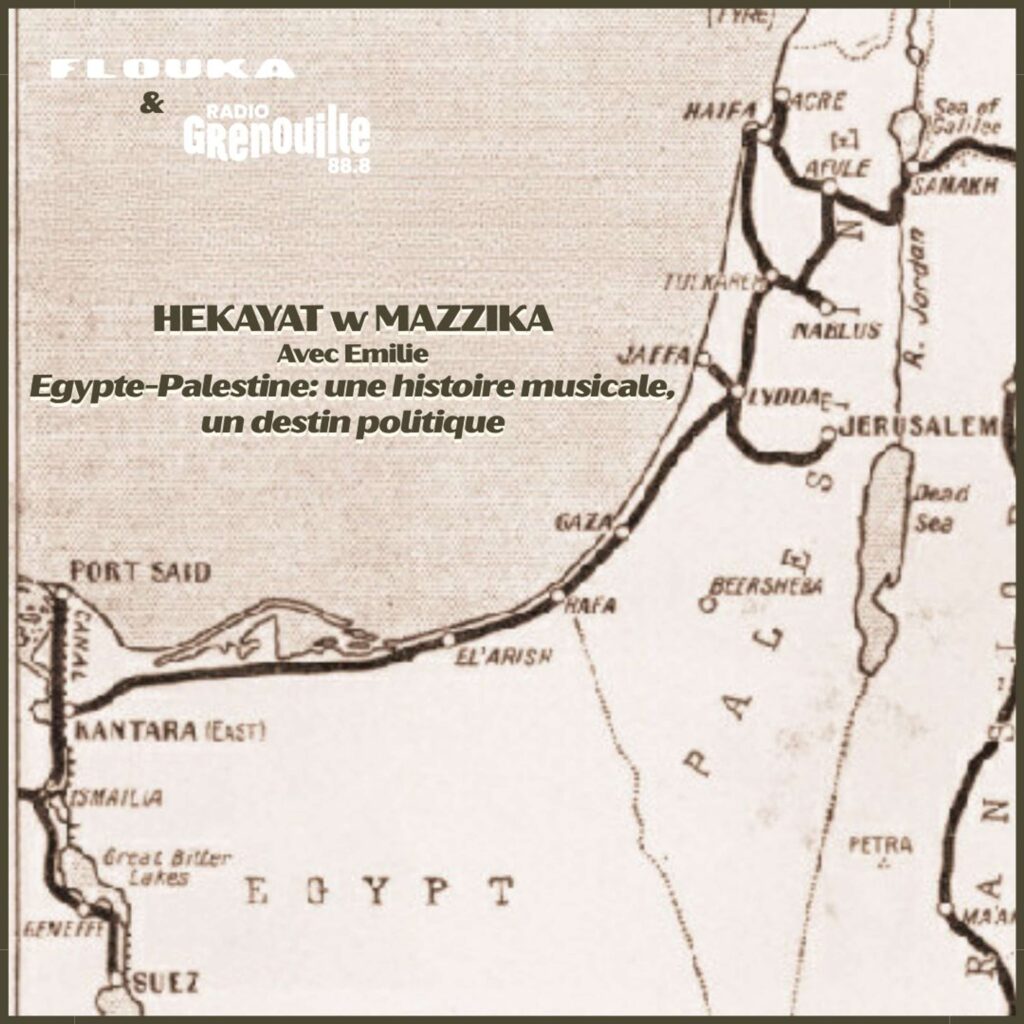Des années 1910 à nos jours, qu’est ce qui a pu unir la Palestine et l’Egypte musicalement ? Comment ces liens culturels sont-ils devenus des liens de solidarité politique ? Ou est-ce qu’ils étaient déjà politiques ? Comment la Palestine devient vecteur de politisation pour les égyptiens ?J’ai essayé de retracer ces traces en passant par la chanson d’Oum Kalthoum “Asbaha andi al’an bunduqiya”, les voyages d’entres autres Asmahan en Palestine dans les années 40, et le rôle qu’ont joué les anciens chemins de fer palestiniens et la radio Palestine Broadcast Service.
Sources:
Loab Hammoud. (2024). Arab Art Music between Cosmopolitanism and Nationalism in Mandate Palestine, Journal of Palestine Studies, 53:2, 9-34
Joel Beinin. (2024). Egyptian Popular Culture in Late Ottoman and Mandate Palestine. Palestine/Israel.
Racy, Ali Jihad. (1976). Record Industry and Egyptian Traditional Music: 1904-1932. Ethnomusicology 20, no. 1. 23–48.
Andrea Stanton. (2012). Jerusalem Calling: The Birth of the Palestine Broadcasting Service. Jerusalem Quarterly Issue 50.
Images:
Jericho entertainment by the Palestine Broadcasting Service. The mayor of Jericho, Sabri Eff. Khalaf, broadcasting fr[om] the Jericho Square. Jerusalem. 1940 Mar. 6. Library of Congress.
Map of the railway https://www.railwaywondersoftheworld.com/palestine.html
Tracklist:
- Mounira Al Mahdiya – Wal Naby Ma’ To3zoriny
- Oum Kalthoum – Ala Balad El Mahboub
- Asmahan, Farid Al Atrash – Ghabet el shams
- Mohammed Abdelwahab – Falestin
- Oum Kalthoum – Asbaha andi al’an bunduqiyyah
- Sheikh Imam – Falestinia
- Logical da9oud, TRZY, WAGDI YACHTER – Fi Ahdan Al Tarikh
